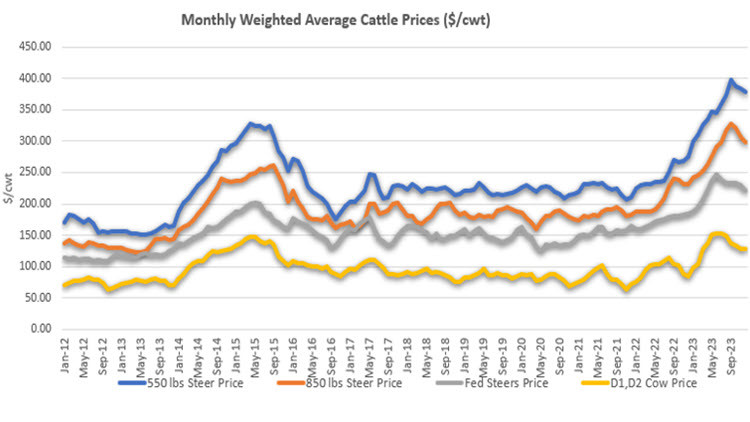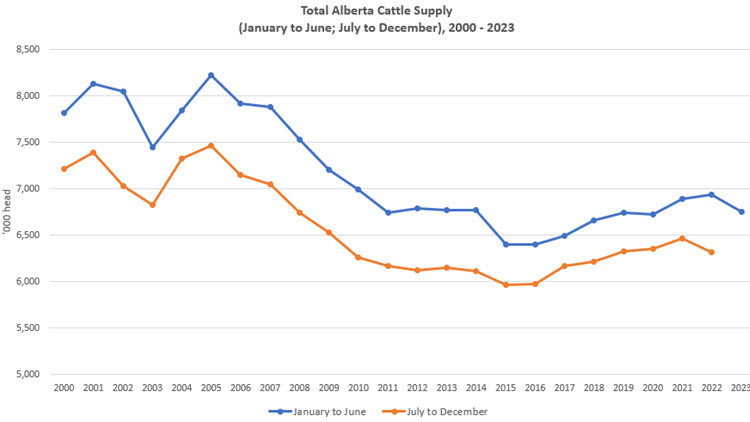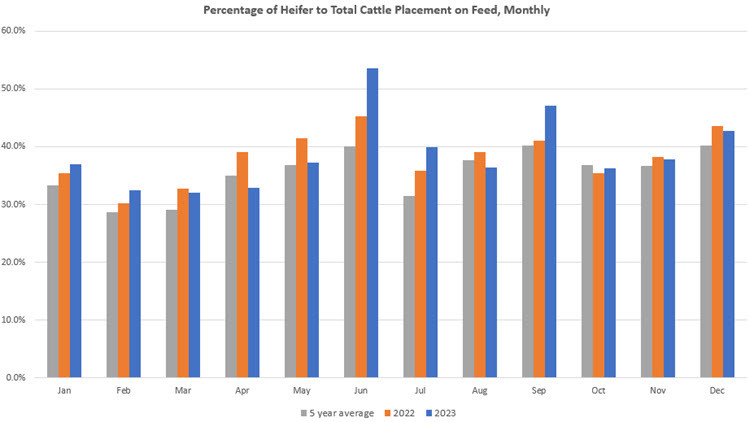Non-urgent government operations are closed December 24 to January 1, reopening January 2. View available services during this period.
See event listings and more articles in this edition of Agri-News: January 22, 2024 issue
“The past year saw average monthly prices for fed steers in Alberta peak in June at $246.61 per hundredweight,” says Ann Boyda, provincial livestock market analyst with the Alberta government. “Feeder prices were also historically high, peaking in September at $397.90 per hundredweight and $328.41 per hundredweight for 550-pound and 850-pound steers, respectively. Cow prices were also strong, peaking at $153.64 per hundredweight in July for cows in good condition. Strong prices seem poised to continue into 2024, in part, due to smaller cattle inventories.”
Figure 1. Monthly Weighted Average Cattle Prices

Statistics Canada’s supply and disposition data for total cattle in Alberta reflects the contraction experienced in the first half of 2023. The January to June 2023 cattle supply of 6.757 million head was estimated to be 2.6% lower than that of the same period in 2022. Supply estimates take into account the beginning inventory, calves born, interprovincial imports and international imports. The inventory estimates as of January 2024 are currently being compiled and expected to be released in early February.
Figure 2. Total Alberta Cattle Supply

What has attributed to this decline? Many sources point to drought conditions and concerns of feed availability. Higher calf and feeder prices also encouraged greater placement of cattle into feedlots, removing future inventory.
“2024 may be starting with smaller cattle inventories but high prices may still provide incentive to rebuild,” points out Boyda. “The cold weather may cause feedlots to hold back cattle which could increase bid prices in the near term. Current signals suggest that the rebuild may still be a ways off.”
Heifer placements on feed are still commanding a high share of the total cattle placed on feed. June 2023 witnessed a higher proportion of heifers enter feedlots (53.5%), exceeding 2022 proportionate share and that of the 5-year average for June of 40%. Signs of producers retaining more heifers for replacement did not emerge for the remainder of 2023.
Figure 3. Percentage of Heifer to Total Cattle Placement on Feed, Monthly

Although total cattle slaughter volume of over 2.5 million head in Western Canada decreased by approximately 3.6% in 2023 versus 2022, cow slaughter volume of 379,565 head increased by 7.9% over the same period. Continued high levels of cow slaughter pressure the beef supply going forward.
“In 2023, dry conditions, high costs and interest rates, limited labour and economic uncertainty held back any plans for growth. Restocking drought-reduced cow herds takes time so any expansion will be slow. How long this will take rests with predictions of weather, beef demand and profitability. So far, beef demand has proven robust even with higher prices relative to other proteins.
“Cow-calf producers have recovered positive margins last year and are hoping to sustain favourable margins into the near future. Even feedlot operators enjoyed some months of positive margins in 2023, although higher prices paid for feeders last year may result in tighter returns in the first half of 2024. Overall, 2024 has some prospect of being a good year, especially for the cow-calf sector, but weather remains the greatest risk factor,” says Boyda.
Contact
Connect with Ann Boyda for more information:
Phone: 780-422-4088
Sign up for Agri-News
Start every Monday with the week’s top agricultural stories and latest updates.
Read about all things agriculture at Alberta.ca/agri-news